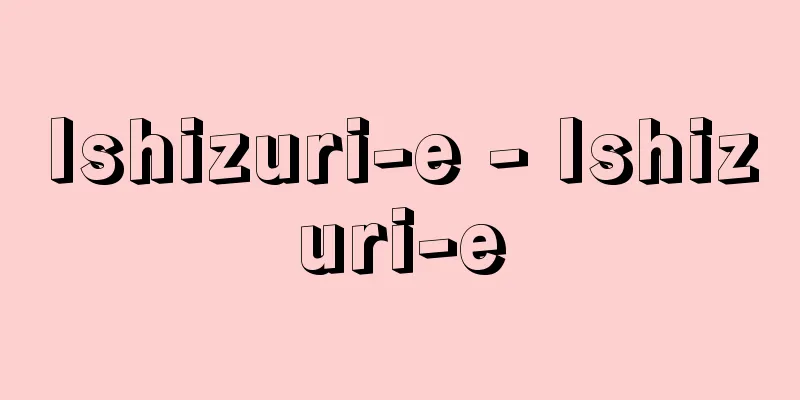A pledge - Kishomon

|
A kisho is a vow made to the gods and Buddhas, in which one accepts punishment from them if one's words are false, and the document in which this is recorded is called a kishomon. There are two types of kisho: affirmative kisho (affirming that the content is a mantra) and affirmative kisho (promising to do or not do something). Kisho in this sense have been practiced since ancient times, but the documents that record them began to be called kishomon from the late Heian period. The part that records the content of the kisho is called the foreword, and the part that states that one should receive punishment from the gods and Buddha is called the punishment document or shinmon. As for the punishment letter, the following was a typical example, written at the end of the Goseibai Shikimoku (Curricular Order of the Punishment of the Kamakura Period) by Hojo Yasutoki and others: "Brahma, Indra, the Four Great Heavenly Kings, the Great and Small Shinto Deities of the 60 or so provinces of Japan, especially the Gongen of Izu and Hakone, Mishima Daimyojin, Hachiman Daibosatsu, Tenman Daijizai Tenjin, and all the related deities and attendant divine punishments are all to be punished, therefore I hereby swear as follows." At first, the swearing was written on a blank sheet of paper, but later it came to be written on the back of a piece of paper called Goo, which was issued by temples and shrines. The Go-o of Kumano Shrine is known for expressing the four characters "Go-o Hoin" with the design of a crow, the divine messenger of Kumano. Kishomon were used in various cases in the Middle Ages, and were particularly important as a method of proof in court cases, but became a formality in the Edo period. [Ryosuke Ishii] Source: Shogakukan Encyclopedia Nipponica About Encyclopedia Nipponica Information | Legend |
|
起請とは、神仏に呼びかけて、もし自己の言が偽りならば、神仏の罰を受くべきことを誓約することをいい、これを記した文書を起請文という。 起請には確言的起請(内容にあることが、真言であることを確言すること)と、確約的起請(ある事をし、またはしないことを確約するもの)とがあった。この意味の起請は古くから行われていたが、これを記した文書を起請文と称したのは平安後期からである。起請の内容を記した部分を前書といい、神仏の罰を受くべき旨を記した部分を罰文または神文(しんもん)という。罰文としては、鎌倉時代の御成敗式目の末尾にある北条泰時(やすとき)らの連署起請文の「梵天(ぼんてん)・帝釈(たいしゃく)・四大天王・惣(そう)日本国中六十余州大小神祇(じんぎ)、特伊豆・筥根(はこね)両所権現(ごんげん)、三島大明神・八幡大菩薩(はちまんだいぼさつ)・天満(てんまん)大自在天神、部類眷属(けんぞく)神罰冥罰(みょうばつ)各可罷蒙者也、仍起請文如件」というのがその後の典型となった。起請文は初め白紙に書かれていたが、のちには寺社の発行する牛王(ごおう)と称する紙の裏に記すようになった。熊野の神使である烏(からす)の模様で「牛王宝印」の4文字を表現した熊野神社の牛王が知られている。起請文は中世では各種の場合に用いられ、ことに裁判の証拠方法上、主要な意味をもっていたが、江戸時代には形式化した。 [石井良助] 出典 小学館 日本大百科全書(ニッポニカ)日本大百科全書(ニッポニカ)について 情報 | 凡例 |
<<: Marsdenia tomentosa Morr.et Decne.
>>: Rare Animals - Yellow-spotted Plants
Recommend
Food to drink - Kasshikimono
〘Noun〙 A Noh piece that features a half-monk, half...
Watarai [town] - Watarai
A town in Watarai County in central Mie Prefecture...
Conquering Port Arthur - Port Arthur Conquest
During the Russo-Japanese War, the Japanese army b...
Henry I - Henry
…As a royal family related to the royal family, t...
Ebola hemorrhagic fever (Ebolavirus disease)
What kind of infection is it? At the end of June ...
Forster, G.
...However, even after the Thirty Years' War,...
Cirrhopetalum
... The genus Bulbophyllum is characterized by le...
Yunotani [Hot spring] - Yunotani
A hot spring in Choyo Village, Aso District, Kumam...
International Management
...Then, as these newly independent colonies grew...
Inkeri tribe - Inkeri tribe
The Uralic language family is a collective term f...
Japan Federation of Employers' Associations - Nihon Keieisha Dantairenmei
Founded in 1948, Nikkeiren is a national organizat...
Suggestion therapy
A type of psychotherapy that uses suggestion. It ...
Common coffee
...The character "coffee" is used. [Cof...
Siva sect - Shiva (English spelling) Śaiva
A powerful Hindu sect that worships Shiva as the ...
Bolsena [Lake] - Bolsena
Lake Laccio, central Italy. It is a crater lake lo...









